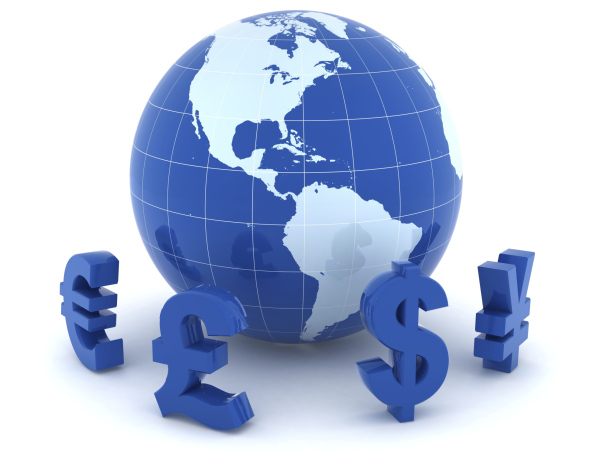The Dollar, ECB, Yen, and Oil Remain Firmly Entrenched in the News

Please note that we are not authorised to provide any investment advice. The content on this page is for information purposes only.
The US dollar changed little against most of the major currencies but is taking another step up against the yen. The failure of the Democrat Party of Japan to mount a serious challenge to Abe, despite the quite divided public support for Abenomics, is leading to surveys that the LDP and Komeito coalition will retain the super-majority they now enjoy. This has been the latest excuse to push the yen lower.
The US dollar changed little against most of the major currencies but is taking another step up against the yen. The failure of the Democrat Party of Japan to mount a serious challenge to Abe, despite the quite divided public support for Abenomics, is leading to surveys that the LDP and Komeito coalition will retain the super-majority they now enjoy. This has been the latest excuse to push the yen lower.
Moreover, despite the talk in some quarters of currency wars, the official push back is only noticeable by its absence. On top of that, some Japanese officials themselves expressed the only even lukewarm resistance.
That China delivered its first interest rate cut in a couple of years after the BOJ stepped up in QE efforts does not mean the PBOC was responding to Japan. Surely, we can agree that 1) China moves on its own timetable and 2) for its own reasons. On one hand, some observers recognize that China is continuing to slow, and accept that next week’s data will likely confirm soft price pressures (and reasonably firm exports), and yet its rate cut was primarily motivated by external developments.
A weekly close above the JPY120 level will likely target the JPY122.00-50 area next and then JPY124-JPY125. There is no compelling reason to give up the bearish yen story. As is well appreciated, the BOJ is expanding its balance sheet at a rate of 1.4% (of GDP) a month. There is not forum between now and early next year that would offer a platform for G7 or G20 officials to voice concern.
While saying the same for the euro, the situation is a complicated by the divisions at the ECB. At yesterday’s ECB meeting, Draghi (and Constancio) did not display the sense of urgency expressed previously. Besides the substantial downward revisions to growth and inflation forecasts, there was little new in Draghi’s comments. He did try to play down action at the next meeting (January 22) and seemed to draw attention to the March 5 meeting (which will be held in Cyprus), but that did not stop some from playing up the Jan meeting for new action.
Whether the return of the ECB’s balance sheet is an expectation, intention, or target is minor in itself. However, the word play clearly reveals the tension within the ECB itself. Within hours of the meeting, there were two reports obviously planted by partisans in the battle over the ECB’s course. The first claimed that a broad bond purchase program would be unveiled in January but it lacked a composition decision. Further, implementation was a separate issue. On its face, this hardly went beyond what Draghi had indicated, but the implication was that despite not taking new steps yesterday, new action was likely in the near-term.
The second claimed that the division on the Executive Board of the ECB was profound. This meant the opposition to buying sovereign bonds was significant. The report named names. Both Lautsenschlaeger and Mersch had already expressed skepticism over such a program, but France’s Coeure was also (unexpectedly) cited as in opposition. This is to intimate that Draghi does not command a clear majority of the Executive Board. He does seem to have a majority of the regional presidents, though Weidmann is not likely to be completely isolated.
The decline in the euro after moving above $1.2450 yesterday and the renewed gains in European bonds and stocks today point to the market believing (hoping?) that Draghi and his camp win out. These considerations are overshadowing favorable economic news in the form of a much larger than expected jump in German factory orders, which are among the most forward-looking economic indicators that Germany publishes. October factory orders rose a sharp 2.5% on the month. This was five times more than the Bloomberg consensus and the September series revision to 1.1% from 0.8%. This points to upside risks to the consensus forecast of a 0.3% rise in industrial production, which reports next week.
Meanwhile, Saudi Arabia’s decision to offer steep discounts to its oil sold in Asia and the US leaves no doubt that it is strategically demonstrating that it will not surrender market share willingly to either other OPEC or non-OPEC members. The Saudi’s discount increased from 10 cents to $2. Saudi Arabia cut its discount for European customers. Other OPEC producers have to match the Saudi’s cut or lose market share themselves. While an estimated 80% of US shale output is profitable at $50-$70 a barrel, we have suggested a greater vulnerability comes from the leveraged financing in the eco-system created by shale-production.
Yen and Oil Slump, but Focus on ECB and US Jobs is republished with permission from Marc to Market




